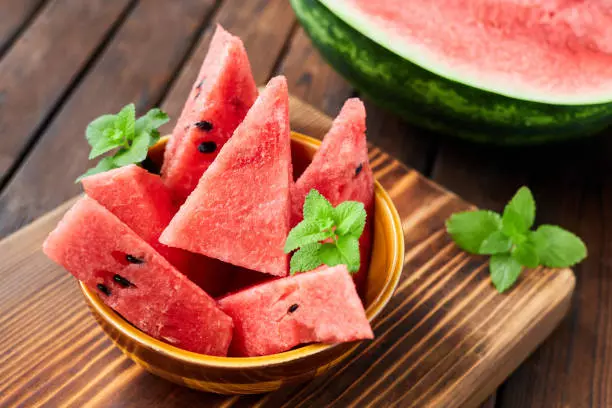
Why watermelon has emerged as a symbol of the Palestine cause
With Israeli authorities often imposing a ban on carrying and displaying Palestinian flag, a watermelon is used to symbolise it instead

Social media these days is flooded with posts expressing solidarity for Palestine and watermelon has emerged as a popular symbol for the purpose. Photographs, emojis and artwork of the sliced fruit are often used to extend support to the people of Palestine.
Though the reason behind a watermelon being considered a symbol of the Palestinian struggle isn’t complicated, its history definitely is. When sliced, a watermelon shows the colours of the Palestinian flag – red, green, black and white. With the Israeli authorities often imposing a ban on carrying and displaying the Palestinian flag, a watermelon is used to symbolise it instead. Many claim that posts with overt Palestinian symbols are restricted by the US-headquartered bigger social media platforms and therefore the sliced watermelon comes in useful here too. Moreover, the watermelon is widely cultivated in Palestine, from the West Bank to Gaza, and features prominently in Palestinian Cuisine.
No Palestinian flags
Though the Israel-Hamas conflict began only a few months ago, Palestine has been on the boil all through the year. Israeli National Security Minister Itamar Ben Gvir claimed he had instructed the police to tear down any Palestinian flags flown publicly, after a terror convict waved the flag following his release from prison in January, The Times of Israel reported.
Waving the Palestinian flag is not legally banned in Israel, but the police often resorts to crackdown, claiming the flag could “disturb peace”. Even as the police continued with the arrests over the issue, an outfit called Zazim began adding images of sliced watermelons on Tel Aviv taxis in June, with the accompanying text reading “This is not a Palestinian flag”.
The work of Palestinian artist Khaled Hourani is another prominent example. Hourani painted a slice of watermelon for the Subjective Atlas of Palestine project in 2007. His work received wide viewership, and served to associate the watermelon with the Palestinian cause strongly.
No clarity on how it started
However, there is no clarity as to how the watermelon was introduced in pro-Palestine protests. While many Western media outlets have reported that it was a major symbol of resistance during the First Intifada (1987-1993), Arab media houses have contradicted this.
Israel occupied West Bank and Gaza after the 1967 Arab-Israeli war and criminalised public display of the Palestinian flag. Therefore, it is plausible that sliced watermelons were used during the First Intifada, which was against the occupation. However, Abu Dhabi-based The National reported in 2021, “The story has become a bit of a contemporary myth, proliferated recently on social media, with its true origins buried in various retellings and reposts.”
‘No widespread use in past’
Claimed to be run by two Palestinians in Ramallah, a website named Decolonize Palestine said, “There is no mention at all of this practice in the literature of the first Intifada [in English and Arabic]. There are references to people using the watermelon as an example of the banned colour combination… but none of the widespread use of watermelon slices as a political statement or as a substitute for the Palestinian flag.” They also add, “…we reached out to several members who were active in the popular committees of the Intifada regarding this issue, none of them could recollect anyone ever using watermelons as symbols of resistance.”
Even though the origin of the use of the watermelon in pro-Palestine protests is unclear today, it is widely accepted as a symbol of Palestinian resistance.

